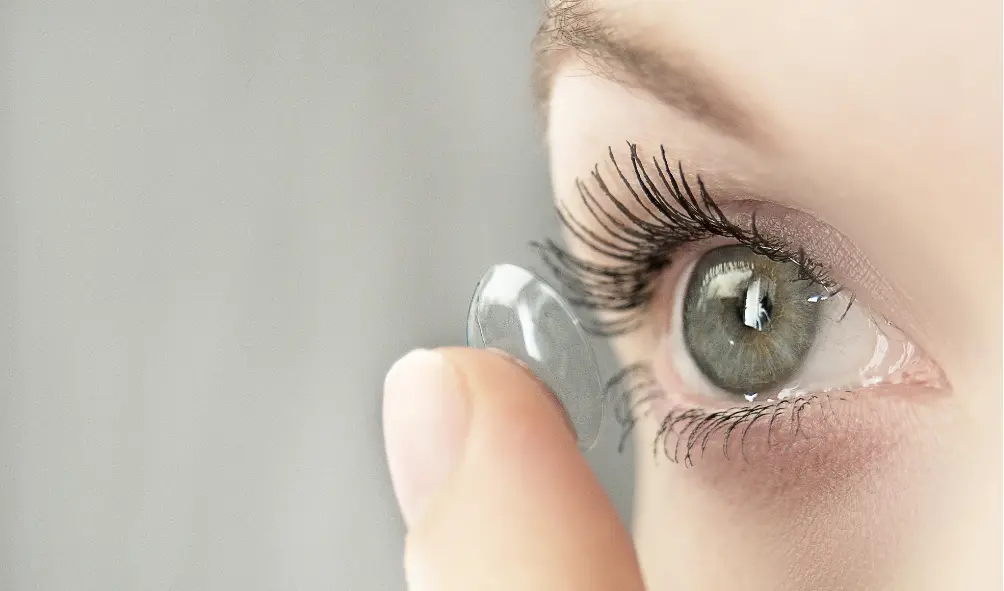Posted March 3, 2024

The purpose of this guide is to demystify the process of inserting contact lenses, empowering individuals to confidently manage their vision correction needs. While the prospect of handling contact lenses may seem daunting at first, mastering the art of insertion is an essential skill that can significantly enhance one's quality of life. By providing step-by-step instructions, troubleshooting tips, and practical advice, this guide aims to equip readers with the knowledge and confidence needed to navigate the world of contact lens wear with ease and comfort. Whether you're a newcomer to contact lenses or seeking to refine your technique, this guide is designed to support you on your journey to clearer vision and greater independence.
Clear vision is fundamental to our daily lives, influencing our experiences and interactions with the world around us. Whether it's navigating through bustling streets, enjoying the beauty of nature, or simply engaging in conversation, the ability to see clearly enhances every aspect of our existence. Visual clarity not only contributes to our overall well-being but also impacts our confidence and productivity.
Contact lenses offer a convenient and effective solution for correcting vision impairments. Unlike traditional eyeglasses, contact lenses sit directly on the eye's surface, providing a natural field of vision without the obstruction of frames. This allows wearers to enjoy a more immersive visual experience, whether engaging in sports, pursuing hobbies, or participating in social activities. Additionally, contact lenses offer aesthetic advantages, allowing individuals to showcase their natural facial features without the perceived barrier of glasses.
Before handling contact lenses, it's essential to wash your hands thoroughly with soap and water. Proper hand hygiene helps remove dirt, oils, and bacteria that can transfer to the lenses and cause irritation or infection. Be sure to dry your hands with a lint-free towel to prevent lint or debris from transferring to the lenses.
To facilitate a smooth and successful lens insertion process, gather all necessary supplies beforehand:
1. Contact Lenses: Ensure that you have the correct contact lenses for each eye as prescribed by your eye care professional.
2. Contact Lens Solution: Use a recommended multipurpose solution to clean, disinfect, and store your lenses.
3. Contact Lens Case: Have a clean and dry contact lens case ready to store your lenses when they are not in use.
4. Mirror: Use a well-lit mirror to assist you in positioning and inserting the lenses accurately.
5. Towel or Tissue: Keep a clean towel or tissue nearby to wipe away excess solution or moisture.
Having these supplies readily available will streamline the lens insertion process and minimise the risk of contamination or mishaps.
Proper lighting is crucial for ensuring accurate placement and positioning of contact lenses. Choose a well-lit area with natural or artificial light to provide adequate visibility during the insertion process. Avoid harsh or dim lighting conditions, as they can make it challenging to see the lenses and assess their alignment on the eye.
Position yourself facing the light source, ensuring that there are no shadows or glare obstructing your view. Utilise additional light sources such as desk lamps or overhead lights if necessary to enhance visibility.
By preparing your hands, gathering supplies, and ensuring proper lighting, you can create an optimal environment for successful contact lens insertion, enhancing comfort and visual clarity throughout your day.
1. Removing Lenses from the Case:
2. Inspecting Lenses for Damage or Debris:
1. Using Dominant Hand for Insertion:
2. Techniques for Holding Eyelids:
1. Using the Index Finger Method:
2. Avoiding Air Bubbles or Folds:
1. Natural Blinking to Center the Lens:
2. Adjusting Lens if Necessary:
1. Assess Lens Orientation:
2. Check Eye Moisture:
3. Practice Patience:
1. Verify Lens Cleanliness:
2. Check for Debris:
3. Assess Fit:
1. Dispose of Torn Lenses:
2. Prevent Damage:
3. Replace Regularly:
This guide covers the essentials of inserting contact lenses, from understanding lens types and prescriptions to troubleshooting common issues. Mastery of this skill requires patience and practice, leading to increased confidence in handling lenses. Regular check-ups with your eye care provider are essential for ensuring eye health and receiving personalised advice. Overall, contact lenses offer enhanced vision and convenience in daily life, with proactive eye care ensuring clear vision and comfortable wear over time.
 Book An Eye Test
Book An Eye Test